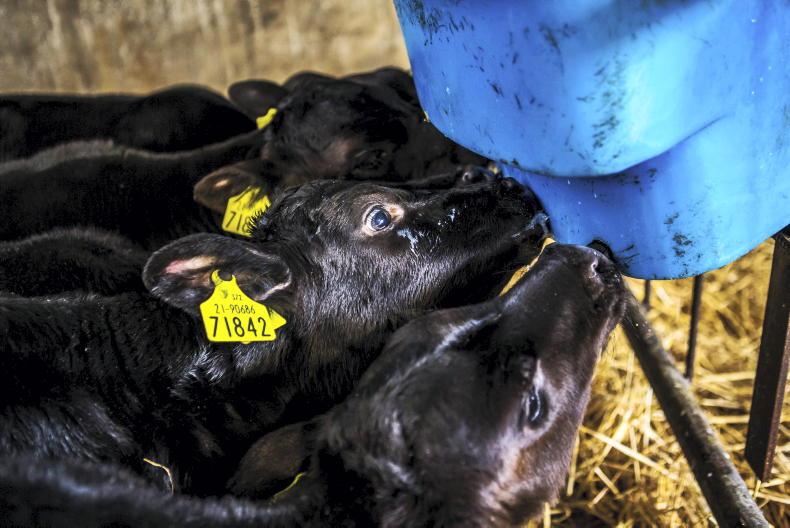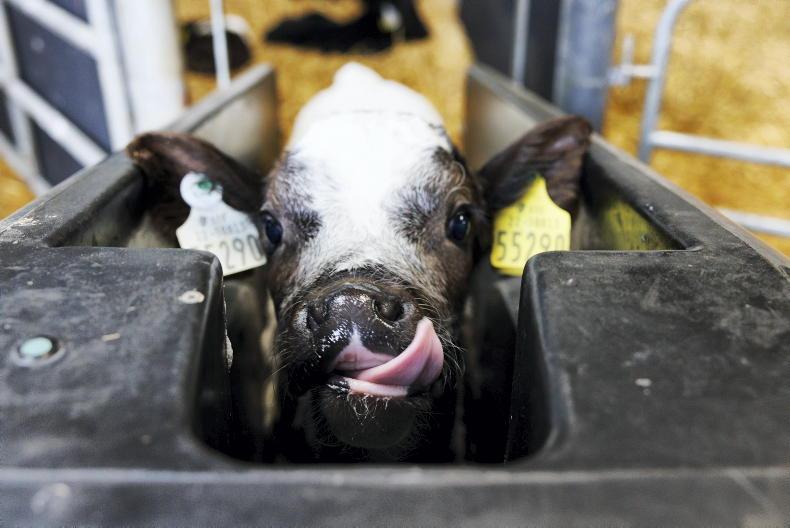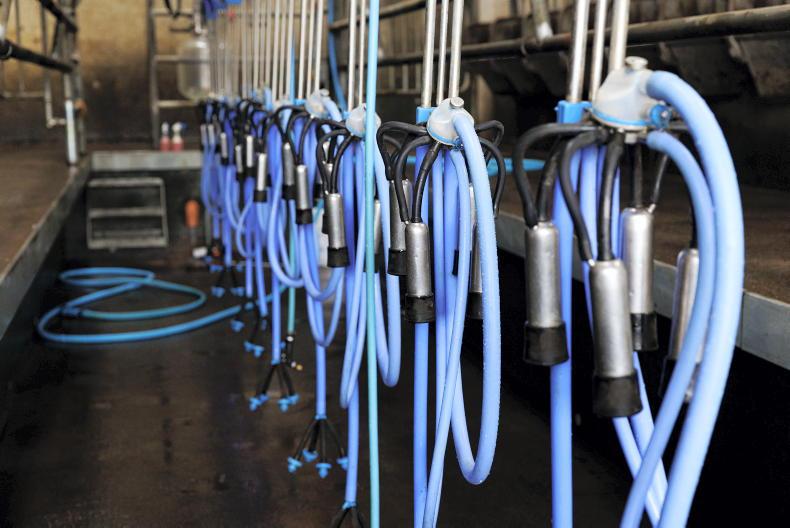Calving is now entering the wind down for most farms as we enter the sixth week since calves started hitting the ground across dairy herds.
While calf rearing has become automated on some farms with the uptake in automatic calf feeders, the majority of farms continue to feed milk replacer or whole milk manually through teat feeders.
Manually feeding calves is a time-consuming task, with some farmers reporting that calf care in spring takes equally as long as milking.
Once-a-day feeding of whole milk or milk replacer can be implemented from four weeks of age to help reduce labour associated with calf rearing with no significant draw backs.
Preparation
The abomasum of a newborn calf is not large enough to deal with the recommended volume of milk if it is given in one feed.
Calves should have access to ad-lib roughage and concentrates in the first four weeks of life to help develop the abomasum in preparation of a solid diet.
From four weeks of age, studies show that cold whole milk or milk replacer can be fed once a day with no difference in weight gain or scour incidence.
Calves should have access to ad-lib roughage when feeding milk once a day, with concentrates fed at an alternative time to feeding of milk, for example milk replacer fed in the morning and concentrates fed in the evening.
Teagasc studies have indicated that labour can be reduced by up to 25% by implementing a once-a-day feeding regime from four weeks onwards.










SHARING OPTIONS